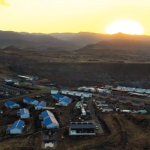The 2024/2025 period has seen notable progress in Phase II of the Lesotho Highlands Water Project (LHWP II), having previously overcome early setbacks including the COVID-19 pandemic among other delays.
Since its inception in 2015, LHWP II has steadily evolved from design to execution, marking a new era in infrastructure development and bi-national cooperation between Lesotho and South Africa.
From early procurement and planning stages, the project moved into high gear in 2018 with the awarding of its first construction tender. By 2023, most advance infrastructure works had been completed, and 2024 became a year defined by milestone achievements, especially in water transfer works.
Below is a peek into the current state of the project in 2025, based on the information from the Lesotho Highlands Development Authority (LHDA)
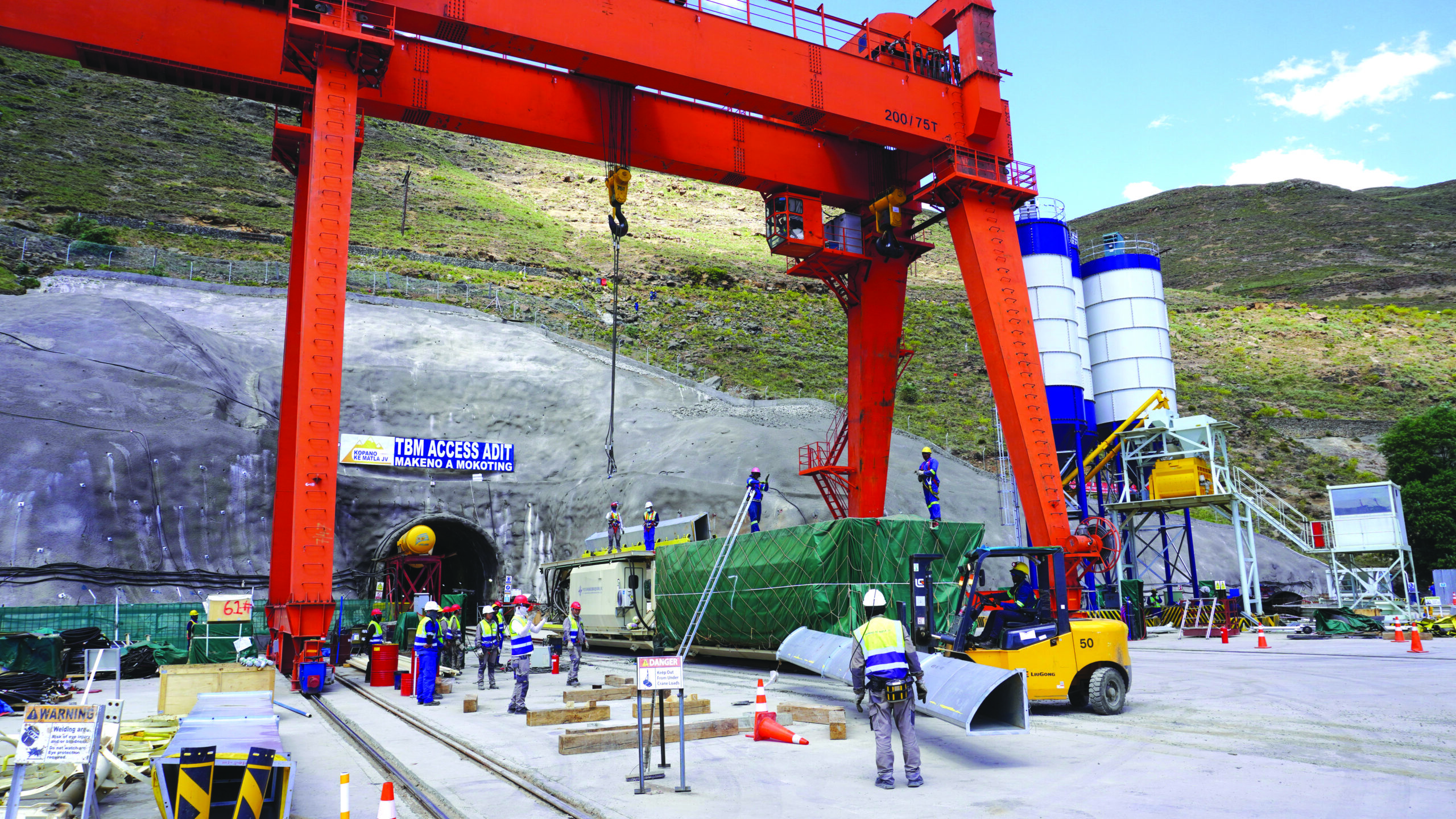
Polihali Dam rises
With a full supply storage capacity of 2,325 million cubic metres, the Polihali Dam will incrementally increase the current water transfer volumes of 780 million cubic metres per year to the Gauteng region of South Africa to 1,270 million cubic metres per year. It will simultaneously increase power generation beyond the 72 mega watts (MW) capacity at the ‘Muela hydropower station.
Like Mohale, Polihali Dam is a concrete faced rockfill dam (CFRD). Standing at 166 metres high, it is taller than Mohale and represents the third largest dam of its kind in the region. Over 14 million cubic metres of locally quarried rock are being compacted to form the embankment, nearly double the 7.5 million cubic meters used for the Mohale embankment.
In 2024, works on the dam included completion of the coffer dam to design height. Early 2025 activities focused on the main dam rockfill placement, construction of the main dam plinth, excavation of the intake tower, and the tunnel that will supply a compensation outlet structure and a small hydropower station. As of March 2025, the Polihali Dam construction work was 25 percent complete.
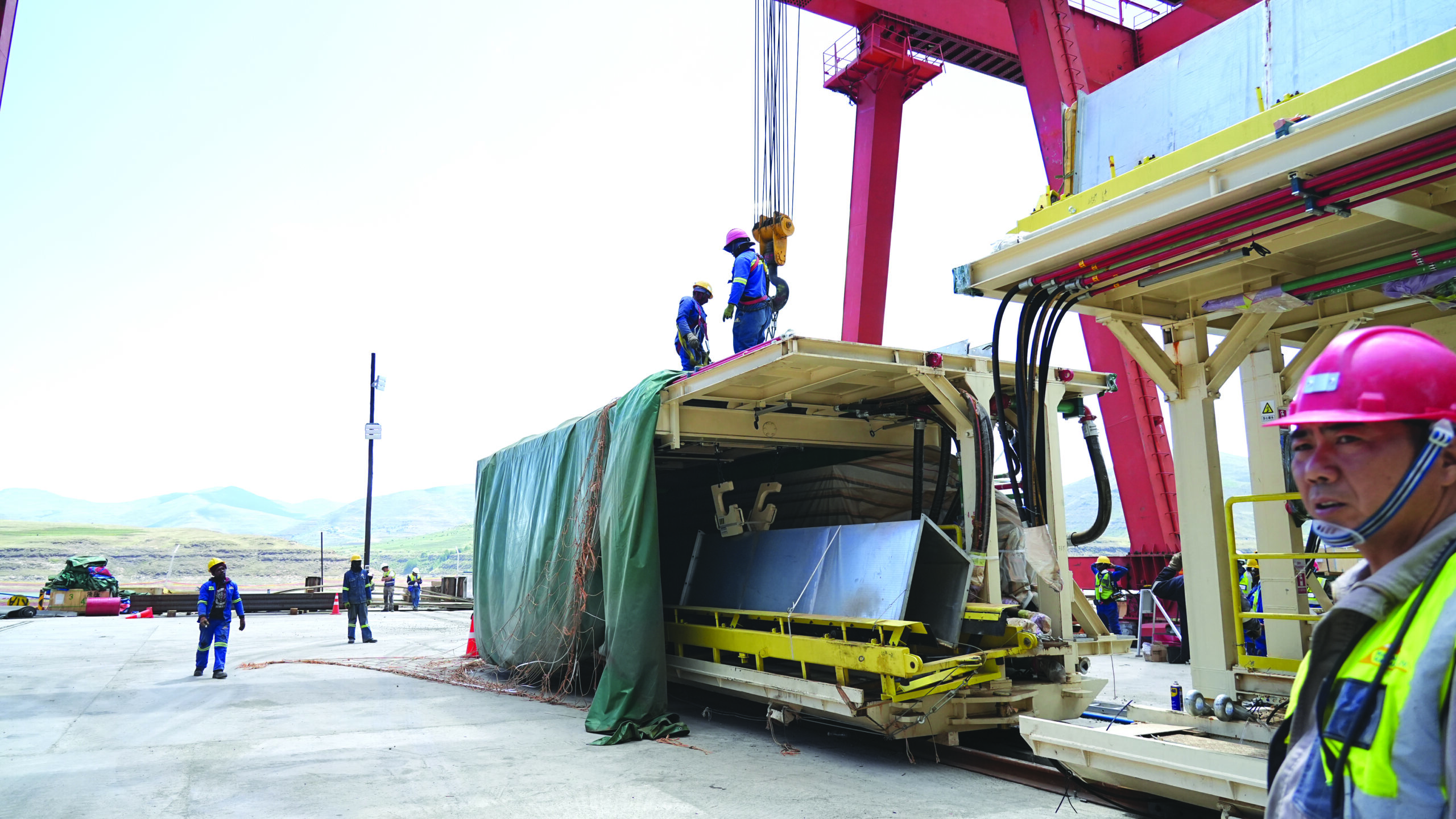
Transfer tunnel progress
A 38-km tunnel with a 5-metre nominal bore will transfer water by gravity from Polihali to the Katse reservoir, similar to how water is transferred to the Katse dam by a 32- metre tunnel from Mohale. The year 2024 saw drill and blast excavations begin in earnest on both the Polihali and Katse sides of the tunnel.
A major milestone was marked in August with the breakthrough of the upper intake tunnel into the lower intake tunnel after seven months of tunnelling, and the commencement of Polihali’s gate shaft excavation using the raise boring method towards the end of the month.
In early September, the first 126 pieces of the double-shielded tunnel boring machine (TBM) to excavate the Polihali Transfer Tunnel from the Katse end arrived in Lesotho. This followed successful factory acceptance tests in China in May and a month-long voyage to Durban between July and August.
From Durban, the TBM pieces were transported carefully by road through KwaZulu-Natal and the Free State via the Calendonspoort border post into Lesotho. Reassembly commenced shortly after its arrival on site.
By end 2024, significant progress had been made on the construction of the Polihali access adit and the Polihali gate shaft. Construction of the Polihali connecting tunnel and the Katse access adit were also underway.
The first early 2025 milestone was an event on site at Ha Bereng, Leribe, on January 15 to launch the TBM excavation from the Katse end of the tunnel. The event proceedings included the traditional naming of the TBM following a nationwide naming competition. “Khoiti ea Ngoaha Kholo2”, meaning “the rat mole of 200 years,” was the winning name, coined by Mary Taolana Setheha and confirmed through public voting.
The second tunnel boring machine, which will excavate from the Polihali end of the tunnel, is expected to reach site towards the middle of 2025. Excavation of the 38-km Polihali Transfer Tunnel is expected to take approximately 2.5 to three years, excavating from both ends. As of March 2025, the Polihali Transfer Tunnel construction works were 30 percent complete.
“The advancements on the transfer tunnel and other Project components indicate the commitment of the teams on the ground to implement the project, in line with the desires of the Project owners,” said LHDA Chief Executive Tente Tente.
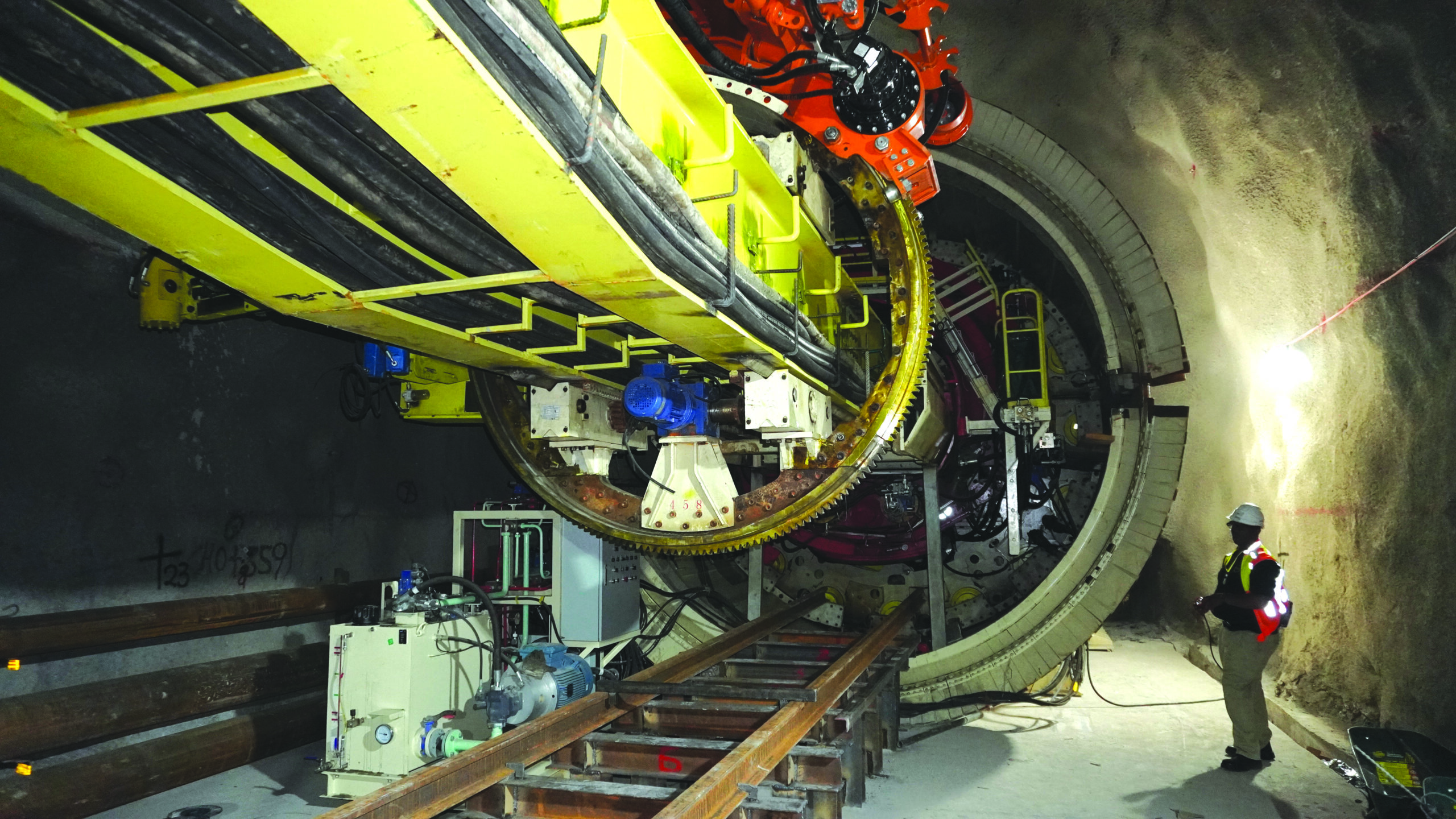
Major bridges restore community access
Three major bridges which will restore critical community access to services are under construction on the A1 Road between the Mapholaneng and Mokhotlong towns. Senqu Bridge, the first cable-stayed bridge in Lesotho, at 825m long and 90m high, is the largest of the three bridges. It reached a key milestone with the completion of all 15 piers in December 2024.
In January 2025, another milestone was reached at the bridge with the erection of the first cable at abutment 2 and the first cable component, duct and anti-vandal sleeve in place. Thirty-seven individual cables are twisted together inside the ducts to make each cable bundle. These are continuous from one end to the other, passing through the pier heads in a sleeve.
Substantial progress has been made on casting deck segments on both abutments. Deck two of the Senqu Bridge to reach pier 14 was launched in February 2025, marking the first time the deck spanned 50m. As of March 2025, Senqu Bridge construction works were 75 percent complete.
2024 also saw significant advancements on the Mabunyaneng and Khubelu bridges following the construction contract award in 2023 to Concor Nthane Brothers Joint Venture.
Construction of the eight piers of the Khubelu Bridge and the piling for the Mabunyaneng bridge piers was complete by the end of 2024, with the piling of Abutment A3 planned for completion in 2025.
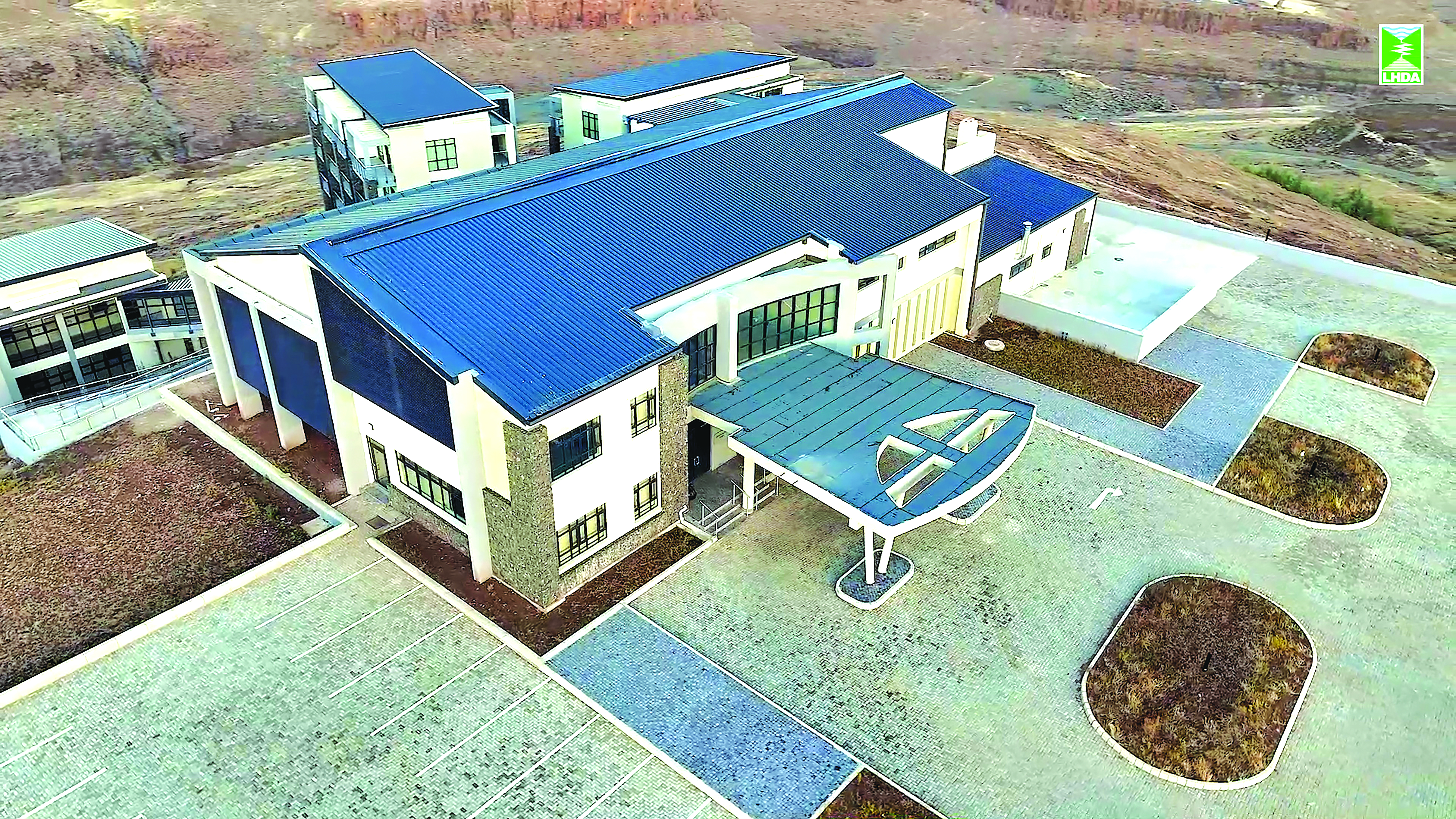
Feeder roads mitigate impact on communities
A feeder roads and bridges programme complements the construction of the access roads and the major bridges. It mitigates the impact of the Polihali reservoir on local communities, restoring accessibility to affected areas and improving access to community facilities such as schools, markets, and clinics, while integrating existing and resettled villages into the national road network. The comprehensive programme comprises 94.2-km of feeder roads, four pedestrian bridges, and six vehicle bridges.
The design and construction supervision contract for the LHWP II feeder roads and bridges was awarded to the Khubelu Joint Venture in late 2024. The JV is led by Pemahn Consulting (Pty) Ltd (Lesotho) and includes partners KBK Engineers (PTY) LTD and Bosh Projects (PTY) LTD (both from South Africa), with sub-consultants Nala Environmental Services (Pty) Ltd (Lesotho) and STRUTIE Group (Pty) Ltd (South Africa).
Access roads connect highlands communities
Over 70 kilometres of new roads have been constructed as part of LHWP II advance infrastructure, connecting and providing access for communities in the highlands of Lesotho. The 54-km Polihali Western Access Road (PWAR) that connects the Polihali Dam basin and Katse Dam from Ha Seshote to Polihali is benefiting over 24 villages in the vicinity, including many more villages which previously struggled to access social and health services.
The Polihali Northern Access Road (PNEAR), a new Class A Surface road that runs for 16 kilometres from Polihali to Mapholaneng, together with the PWAR, connects the Leribe and Mokhotlong districts. The Seshote to Polihali route is now easily drivable in an hour, compared with hours of walking that people used to endure to access services.
Additionally, the Northern Access Road (NAR) was rehabilitated for 98 kilometres from Pitseng to Katse to facilitate transportation of project equipment while providing improved access for highlands communities.
“We have worked together as neighbours for over 38 years delivering the LHWP, a project that is significant to the people of Lesotho and South Africa. We are proud of the infrastructure developments in the highlands of Lesotho that have, among other benefits, enabled communities to have access to services. As South Africans, we appreciate every drop of water that we have because of this mega initiative,” noted Constance Seoposengwe, the High Commissioner of South Africa to Lesotho.
Tunnel maintenance extends timeline
The ongoing tunnel rehabilitation, originally scheduled for completion by the end of March 2025, has been pushed back due to necessary additional works.
“As of March 11, 2025, significant progress has been made, with 88 percent of the total cleaning and sandblasting work completed and 74 percent of the affected sections already recoated with corrosion protection. The project timeline has remained largely on track; however, due to necessary additional works at specific locations, final completion has been slightly extended beyond the initial schedule,” the LHDA said in March this year.
The final phase includes completing the ‘Muela Ridge and Bypass Tunnel area, as well as the Hlotse Adit site, expected to take approximately a week and a half. Once all maintenance work is concluded, the system will undergo a controlled refilling process taking at least two weeks before water deliveries to South Africa resume and electricity generation in Lesotho is reinstated.
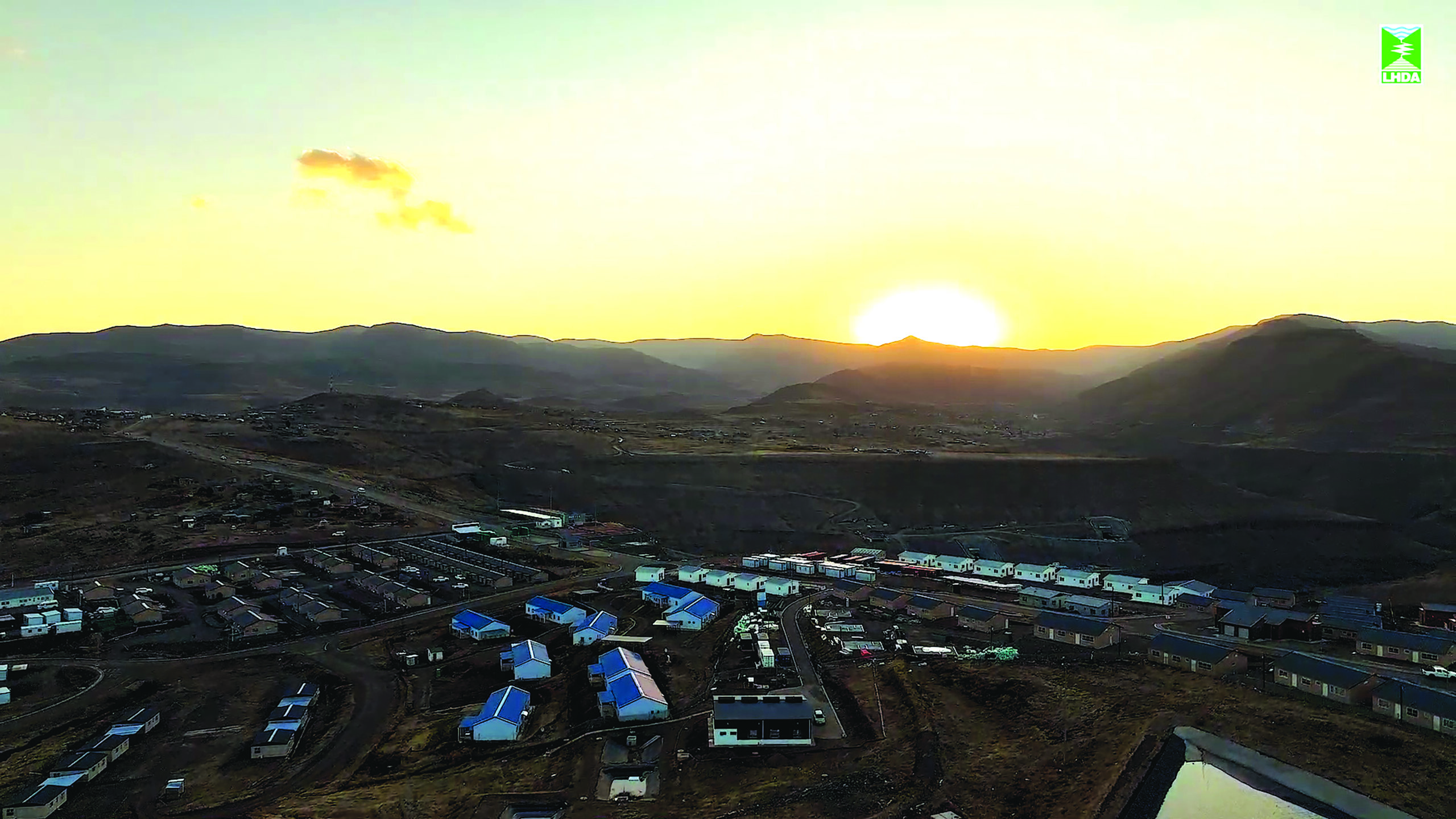
Promoting sustainable livelihoods
Livelihood restoration and social development initiatives are being implemented to ensure that the standard of living of affected households and communities is improved or at least maintained to pre-project levels.
The LHDA has partnered with the Ministry of Agriculture, World Food Programme, and community nutrition clubs to ensure dietary diversity at the household level. Members of over 13 nutrition clubs in the Seate and Mphokojoane community councils were trained in essential food preservation techniques in 2024, including drying, pickling, fermentation, and jam-making.
These skills ensure year-round food availability, even when certain foods are out of season, particularly important given Mokhotlong’s short cropping period.
The Boschveld chicken project, initiated in 2023, distributes poultry to small farming communities in the highlands to promote rural food security. With a capacity of 680 eggs, two incubators at the pass-on-gift centers enhance food security and income generation. LHDA technical teams provide regular training sessions for farmers to improve adherence to standard practices. A comprehensive chicken coop with a capacity to house 1,000 chickens is under construction at the Ha Ramonakalali incubation hub.
Community groups at Tšepong, Tlokoeng, and Malingoaneng were identified to pilot mass production of vegetables such as cabbage from 2023. In that year, a total of 8.12 acres of land was planted with different vegetable varieties and 10,000 cabbage seedlings. In 2024, efforts to support these groups with reliable irrigation schemes were explored to address climate change challenges.
The LHDA has constructed a vegetable tunnel for seedling production at Ha Mojakisane, together with a communal garden to supply the Mokhotlong district. From 2022 to 2024, community members working on over 60 plots at the Ha Mojakisane garden produced short-cycle green vegetables and were assisted by the LHDA in connecting with markets, including LHWP II contractors.
In 2023, LHDA collaborated with active potato farmers at Sekokong in the Senqu Bridge area to increase demonstration production. When the initiative started, 300 bags of potatoes were planted across 18.2 hectares, with LHDA providing additional agricultural inputs to increase production capacity. In 2024, the collaboration continued with an additional 13 hectares planted.
The LHDA is also training local households and communities in beekeeping to enhance pollination, yield, food security, and income generation. The project provides beekeepers with necessary gear and equipment to improve production, with a focus on encouraging participation particularly among youth and women. Training covers hive management, honey processing, and marketing, emphasising sustainable practices to protect bee populations.
As implementation continues, the successes of 2024-25 stand as a testament to the dedication, collaboration, and expertise driving the project forward. LHWP Phase II is steadily taking shape, bringing both Lesotho and South Africa closer to realising its long-term benefits.
Summary
- Early 2025 activities focused on the main dam rockfill placement, construction of the main dam plinth, excavation of the intake tower, and the tunnel that will supply a compensation outlet structure and a small hydropower station.
- A major milestone was marked in August with the breakthrough of the upper intake tunnel into the lower intake tunnel after seven months of tunnelling, and the commencement of Polihali’s gate shaft excavation using the raise boring method towards the end of the month.
- The first early 2025 milestone was an event on site at Ha Bereng, Leribe, on January 15 to launch the TBM excavation from the Katse end of the tunnel.

Seabata Mahao is a general news reporter with special focus on Business and Sports. Started working at Newsday in 2021. Working in a team with a shared goal is what I enjoy most and that gives me the motivation to work under any environment leading to growth.



